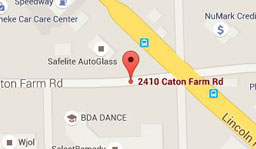Are Dental Veneers Appropriate for Young Adolescents?
 If your young adolescent isn’t happy with the way his or her teeth look, porcelain or composite dental veneers are an option you can consider, provided that all his or her permanent teeth have come through. Here are some things to keep in mind if you consider dental veneers for your adolescent.
If your young adolescent isn’t happy with the way his or her teeth look, porcelain or composite dental veneers are an option you can consider, provided that all his or her permanent teeth have come through. Here are some things to keep in mind if you consider dental veneers for your adolescent.
When Dentists Recommend Veneers
Dental veneers can improve the appearance of your adolescent’s teeth—particularly teeth that are discolored or damaged. A dentist may recommend veneers to change the shape, size, or color of your young teen’s teeth if they overlap, if they have small gaps between them, or if they are permanently stained, chipped, broken, or uneven.
Dentists sometimes suggest the use of veneers on teeth that are discolored due to too much fluoride or due to staining medications, such as tetracycline and doxycycline, which are antibiotics doctors prescribe to treat bacterial infections. Such drugs can cause permanent staining of the teeth when children younger than age 8 consume it. The drugs can even affect children in utero.
What to Expect During the Procedure
Whether you choose veneers made from porcelain or a composite resin material, the steps of the procedure are essentially the same.
The next appointment may require removing a small amount of enamel from the tooth or teeth to which the dental veneers will be bonded. Your adolescent may receive a local anesthetic to numb the area before the dentist removes only enough enamel to accommodate the thickness of the veneer. The dentist may have to remove some tooth enamel so the veneers can bond to the front of the treated teeth.
Before affixing veneers and cementing them in place, the dentist will clean and polish the affected teeth and then rough up (etch) tooth enamel and reshape the teeth for better fit. Your dentist will then match the color of the veneers to the shade of your teen’s other teeth so that the veneers look natural.
Use of a high-intensity light beam hardens the bonding cement used to hold porcelain veneers in place. The same specialized light is used to harden the layers of the composite materials the dentist applies to the tooth surface in order to build a custom resin veneer. After fitting porcelain veneers to your teen’s teeth, the dentist will remove any excess cement and make any remaining adjustments.
What Factors to Consider
Dental veneers don’t necessarily last a lifetime. While porcelain veneers may need to be replaced in time, they usually last longer than composite veneers. Porcelain veneers do cost more, but in comparison to veneers made of composite resin, they are more resistant to staining and less likely to chip or break.
How long before veneers need to be replaced depends on the condition of the veneer and an individual’s overall oral health. But as long as veneers aren’t damaged or stained and show no signs of decay or periodontal disease, you don’t need to replace them.
Damage
If a veneer chips or cracks, it may need replacing. Therefore, if your adolescent has a habit of chewing on his or her fingernails, biting on pencils, or clenching or grinding the teeth, veneers may not be a practical choice. In that case, your child’s dentist may recommend dental bonding, tooth re-contouring, microabrasion, or orthodontic treatment instead.
Tooth Decay
There is also the chance that your teen will get tooth decay under a veneer. Although a porcelain veneer doesn’t decay, cavities can form if bonding fails, leaving a space where food and bacteria can collect between the tooth and the porcelain veneer. Cavities can also occur around the edges of a veneer or on the tooth where the veneer doesn’t cover.
But with effective bonding, proper oral hygiene, and regular dental checkups, dental decay should not be a problem. Routine dental exams also allow dentists to spot chipped or cracked veneers sooner than later. If the damage isn’t severe, a dentist may use a composite bonding material to repair a chipped or cracked veneer. Otherwise, a veneer may need to be removed and replaced.
Gum Disease
If your adolescent’s gums aren’t healthy—and yes, even children and teens can have gum disease—your child’s teeth may not be strong enough to withstand cosmetic dental procedures. Any cosmetic dental work, including applying dental veneers, requires healthy teeth and gums to be successful.
Signs that your adolescent may have gum disease include bad breath, sore or swollen gums, gums that bleed and look red in color, or loose permanent teeth. The good news is early gum disease is often reversible with the right care. Once gum disease is controlled, your teen may still be a candidate for dental veneers.
For answers to your questions about the feasibility of dental veneers for your adolescent, the dental staff of Crest Hill Family Dental are happy to address your concerns.

